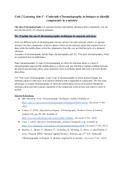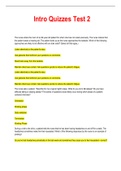CHAPTER 4: DYNAMIC MODELS OF
INFECTION
Different types of models in this chapter:
- SIR without demography
- SIR with demography: equilibrium state, incl. infection induced mortality
- Persistent infections
- SIS: infections without immunity
- SIRS: infections with waning immunity: vaccination effects
- SEIR with/without demography (infections with latent period)
- SEIR without demography
- Multi-compartment models
- Infections with carrier state
- Host heterogeneities: sexual transmitted infections, super-shedders, super-spreaders, age-structured
risk: childhood infections, vector-born transmission, zoonoses
INTRODUCTION
The population we’re interested in is divided in 3 compartments: SIR model
- Susceptibles: once that can become infectious
- Infectious: once that are infected and also are infectious than
- Recovered: no longer infectious and not susceptible
2 important processes:
- Transmission: susceptible individuals become infected
- Recovery: infected individuals become recovered (no longer susceptible)
If we want to understand the dynamics of a system to understand what happens over time in such a
population, we have to describe these two processes. E.g. how many people or going to be infected, is in the
end everyone going to be infected or only a part of the population, … . This is what we want to describe in a
model that represents what we think is happening in such a situation and that helps us to visualize what is
going to happen.
SIR WITHOUT DEMOGRAPHY
A population without demography (no birth/death/immigration/emigration) means that it’s a population
where there is no change in the total population size.
, Assumptions of the model:
- Without demography: no birth, death, immigration and emigration total population size is not
changing
- Not investigating the real numbers but proportions of individuals in this compartment, then we can
investigate processes that are free of scale: S + I + R = 1
Coupled differential equations: continuous model
- Susceptibles: the proportion of susceptibles is going to decrease over time depending on
o The number of susceptible and infectious individuals there are in the population
o β transmission probability: depends on how often there is a contact between a S individual
(c) and I individual and the probability that during such a contact the transmission is actually
happening
- Infectious: the proportion of infectious individuals is going to
o increase with the same rate as the decrease in susceptible individuals
o decrease with a certain rate depending on the number of infectious individuals and the
recovery rate ( γ )
- Recovered: the proportion of recovered individuals is going to increase with the same rate as there is a
decrease in the infectious individuals compartment
These are coupled differential equations because the things that are changing in one component of the
population will also have an effect on what will happen in other components of the population.
Graphs
If we would solve the differential equations we can see that the different proportions changes in a certain way
over time.
S: decreases, goes from 1 to 0
Rate at which S becomes I: slowly in beginning -
then very fast – again slow
End: everyone is infectious, nobody susceptible
I: will go up, reaches a peak and will go down
Increase with same rate as decrease in S: slowly
in beginning – then very fast – again slow
Decrease with same rate as increase in R, in the
end everyone is R and nobody is I
R: increases, goes from 0 to 1
In this case we can say that for this infection, if one person that is infected enters this population, than you can
predict that after 2 weeks nobody is susceptible anymore, everyone became infectious. But from the infectious
once, some recovered already after 2 weeks. At this moment the addition of new infected once is becoming
small because there are too few susceptibles left, and those that are infected are becoming more and more
recovered so the number of infected goes down and the number of recovered increases. After 6 weeks there
are hardly infectious people anymore, no susceptible individuals anymore. After 7 or 8 weeks, everyone will be
recovered.
Based on this you can predict how long an endemic is going to last in a population: useful to organize
health system, control measures, …
INFECTION
Different types of models in this chapter:
- SIR without demography
- SIR with demography: equilibrium state, incl. infection induced mortality
- Persistent infections
- SIS: infections without immunity
- SIRS: infections with waning immunity: vaccination effects
- SEIR with/without demography (infections with latent period)
- SEIR without demography
- Multi-compartment models
- Infections with carrier state
- Host heterogeneities: sexual transmitted infections, super-shedders, super-spreaders, age-structured
risk: childhood infections, vector-born transmission, zoonoses
INTRODUCTION
The population we’re interested in is divided in 3 compartments: SIR model
- Susceptibles: once that can become infectious
- Infectious: once that are infected and also are infectious than
- Recovered: no longer infectious and not susceptible
2 important processes:
- Transmission: susceptible individuals become infected
- Recovery: infected individuals become recovered (no longer susceptible)
If we want to understand the dynamics of a system to understand what happens over time in such a
population, we have to describe these two processes. E.g. how many people or going to be infected, is in the
end everyone going to be infected or only a part of the population, … . This is what we want to describe in a
model that represents what we think is happening in such a situation and that helps us to visualize what is
going to happen.
SIR WITHOUT DEMOGRAPHY
A population without demography (no birth/death/immigration/emigration) means that it’s a population
where there is no change in the total population size.
, Assumptions of the model:
- Without demography: no birth, death, immigration and emigration total population size is not
changing
- Not investigating the real numbers but proportions of individuals in this compartment, then we can
investigate processes that are free of scale: S + I + R = 1
Coupled differential equations: continuous model
- Susceptibles: the proportion of susceptibles is going to decrease over time depending on
o The number of susceptible and infectious individuals there are in the population
o β transmission probability: depends on how often there is a contact between a S individual
(c) and I individual and the probability that during such a contact the transmission is actually
happening
- Infectious: the proportion of infectious individuals is going to
o increase with the same rate as the decrease in susceptible individuals
o decrease with a certain rate depending on the number of infectious individuals and the
recovery rate ( γ )
- Recovered: the proportion of recovered individuals is going to increase with the same rate as there is a
decrease in the infectious individuals compartment
These are coupled differential equations because the things that are changing in one component of the
population will also have an effect on what will happen in other components of the population.
Graphs
If we would solve the differential equations we can see that the different proportions changes in a certain way
over time.
S: decreases, goes from 1 to 0
Rate at which S becomes I: slowly in beginning -
then very fast – again slow
End: everyone is infectious, nobody susceptible
I: will go up, reaches a peak and will go down
Increase with same rate as decrease in S: slowly
in beginning – then very fast – again slow
Decrease with same rate as increase in R, in the
end everyone is R and nobody is I
R: increases, goes from 0 to 1
In this case we can say that for this infection, if one person that is infected enters this population, than you can
predict that after 2 weeks nobody is susceptible anymore, everyone became infectious. But from the infectious
once, some recovered already after 2 weeks. At this moment the addition of new infected once is becoming
small because there are too few susceptibles left, and those that are infected are becoming more and more
recovered so the number of infected goes down and the number of recovered increases. After 6 weeks there
are hardly infectious people anymore, no susceptible individuals anymore. After 7 or 8 weeks, everyone will be
recovered.
Based on this you can predict how long an endemic is going to last in a population: useful to organize
health system, control measures, …










